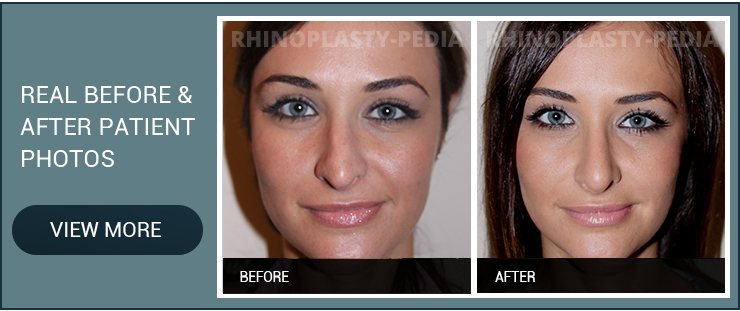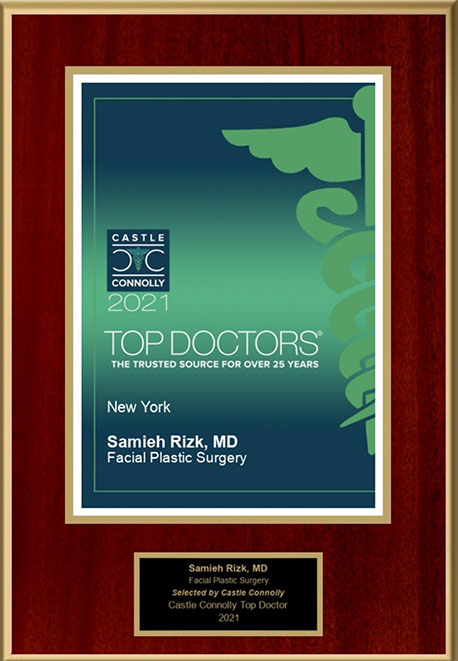Septal Perforation Repair: The Procedure
Septal perforation repair refers to any measures taken to fix a hole in the septum — the structure separating the left and right cavities of the nose which is made of cartilage, bone and two mucous membrane layers on each side.
The steps taken to repair such a hole vary by patient based on the patient’s individual needs. Surgery may or may not be necessary, depending on the circumstances. In fact, the first course of treatment is not surgery, but rather medical management, the objective of which is to create a moist environment inside the nose. This may be accomplished with saline sprays, gels or over-the-counter ointments that prevent bacteria from growing.
If none of these measures are effective or if the patient is still experiencing bleeding, pain or difficulty breathing, it may be necessary to perform surgery. However, it is important to understand that the fail rate of procedures to correct septal perforations can be as high as 60 percent, so it should be viewed as a last resort rather than the first course of treatment.
Complexity of the Surgery
Septal perforation repair is an exceptionally complicated procedure. Therefore, prior to moving forward with surgery it is very important that your surgeon thoroughly examine you to make sure that you do have a perforation and determine the best course of treatment. The complexity of the procedure does eliminate many people from consideration for surgery.
Before clearing you to undergo surgery, your facial plastic surgeon will need to make sure you are a good candidate. As is the case with any surgery, you must be in good general health and have appropriate expectations as to the results.
It is very difficult to reestablish proper blood flow to the treated area. Consequently, people with smaller perforations are more likely to have success with surgery than those with larger perforations.

Before Surgery
There are a number of steps you can take to prepare for septal perforation surgery. First, you will need to educate yourself regarding what the procedure can and cannot accomplish, as well as the potential risks and what the recovery period entails.
It is also extremely important that you avoid smoking before (and after) surgery. Smoking interferes with healing and can increase your chances of infection.
Before heading to your preoperative consultation you should gather your medications, over-the-counter products and any supplements you take so that you can show them to your surgeon. Some medications and supplements, such as anti-inflammatories, aspirin and herbal supplements, can cause problems with your surgery.
Prior to surgery your surgeon will likely provide you with preoperative instructions and may ask you to undergo certain lab tests.
What Does the Surgery Involve?
Septal perforation surgery involves rebuilding cartilage components as well as the mucous membranes in the nose. Cartilage may be harvested from the patient’s ear or rib and placed on the septum. In some cases a skin flap will be made to cover the perforation. In others a septal “button,” or plastic prosthesis, may be used, but for many patients this proves ineffective and/or too annoying. Dissolvable plates are another option. Your facial plastic surgeon will be able to walk you through the different options and explain why he or she feels one is better than the others.
Special Precautions
Because septal perforation repair is such a complex procedure, special precautions need to be taken. This may include the use of state-of-the-art 3D cameras so that the surgeon can view the interior of the nose in high definition. Being able to see the inside of your nose will allow the surgeon to avoid tampering with certain blood vessels and other tissues and structures, in turn reducing your recovery time.
Recovery from Surgery
Prior to having surgery it is imperative that you arrange for help from family and/or friends during your recovery period. Your surgeon will provide you with a list of items you will need to purchase as well as instructions for your aftercare. The length of recovery depends on the complexity of the procedure. Some patients are able to return to work in a few days while others need to wait much longer. If the procedure involved extensive grafting the recovery could entail far more downtime. The nose should be completely healed within about a month.








